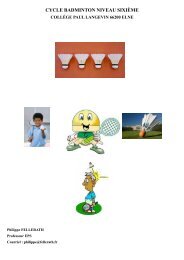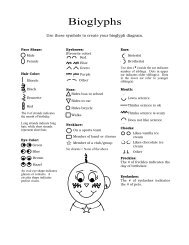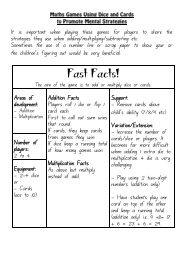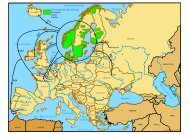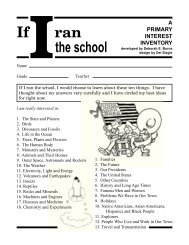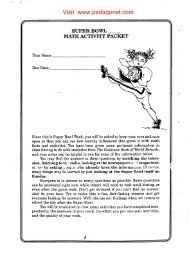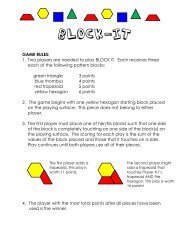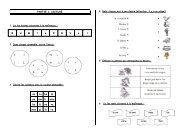Create successful ePaper yourself
Turn your PDF publications into a flip-book with our unique Google optimized e-Paper software.
Butterfly vs. Moth: Wings to WearLesson Five extensionAges PrimaryActivity ExtensionMaterials: (enough for each child)• 1 copy of the left front wing on thick/stiff paper (Figure 6.3)• 1 copy of the left rear wing on thick/stiff paper (Figure 6.4)• 1 copy of the right front wing on thick/stiff paper (Figure 6.5)• 1 copy of the right rear wing on thick/stiff paper (Figure 6.6)• Crayons <strong>and</strong>/or markers• Scissors• Glue• Tape• 3 18” pieces of string• 1 copy of the butterfly body (figure 6.1) or 1 copy of the moth body (figure 6.2) onthick/stiff paperSuggested Approach:Ask your class if they remember two other differences between butterflies <strong>and</strong> moths. Writethe differences on the board. Most butterflies have very brightly colored wings while mostmoths have dull, earthy colored wings. Most butterflies have long, narrow, <strong>and</strong> smoothbodies while most moths have short, fat, <strong>and</strong> furry looking bodies.Making the Wings <strong>and</strong> Body:1. Give each child two copies of the forewing page, two copies of the hindwing page,crayons <strong>and</strong>/or markers, scissors, glue, tape, three 18” pieces of string, <strong>and</strong> one copy ofeither the moth body or the butterfly body to match the antennae they made in Lesson Five.2. Post Figure 5 prominently in the classroom or draw the images on the board so that thechildren can see the butterfly <strong>and</strong> moth antennae.3. Have the children cut out the images along the solid black line. Make sure they do notcut the dashed line. As they do this have them put their forewings in one pile <strong>and</strong> theirhindwings in another pile.4. Tell the children the side with the letters <strong>and</strong> the dashed line will be the underside oftheir butterfly’s or moth’s wings. Keeping that in mind, have the children color both sides ofeach image. Remind the children that both butterflies <strong>and</strong> moths have symmetrical wings.Florida Museum of Natural History http://www.flmnh.ufl.edu 22




